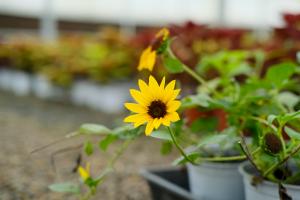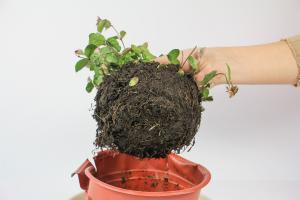How Deep Do I Plant Water Lilies?
Water lilies are a beautiful addition to any water garden, providing not only aesthetic value but also important benefits for the ecosystem. One of the key factors in successfully growing water lilies is planting them at the correct depth. In this article, we will explore the optimal planting depth for water lilies and some tips for achieving the best results.
Why Is Planting Depth Important?
Water lilies thrive when planted at the correct depth, which allows their roots to access the appropriate amount of nutrients and oxygen. If planted too shallow, the roots may dry out and struggle to take up nutrients. If planted too deep, the leaves and flowers may not reach the surface, hindering their ability to photosynthesize and bloom. Additionally, planting at the correct depth can prevent overcrowding and ensure a balanced ecosystem in your water garden.
Finding the Optimal Planting Depth
The optimal planting depth for water lilies varies based on the size of the plant and the size of the container or pond. As a general rule, the crown or growing point of the plant should be located 6-18 inches below the water’s surface. This depth allows the leaves and flowers to float on the surface while the roots receive the necessary nutrients and oxygen below.
If planting in a container, choose a container that is at least 18 inches deep, as this will provide enough depth for the plant to grow and thrive. Fill the container with a soilless mix specifically designed for aquatic plants, leaving enough space at the top for water. Place the water lily in the center of the container, ensuring the crown is at the appropriate depth. Gently cover the roots with the soilless mix and add water to the container until it reaches the appropriate level.
If planting in a pond, consider the depth and size of the pond when determining the optimal planting depth. Larger ponds may require deeper planting depths to ensure the water lilies do not overcrowd one another. If your pond has a sloping floor, consider placing the water lilies in the shallower areas to help balance the ecosystem.
Tips for Maintaining Water Lily Planting Depth
Once your water lilies are planted at the optimal depth, it is important to maintain that depth to ensure their continued success. Check the planting depth periodically as the soil may shift or settle over time. If necessary, gently adjust the placement of the plant to maintain the appropriate depth. In addition, regular fertilization can help promote growth and ensure the plant is receiving the necessary nutrients.
During the winter months, it may be necessary to move your water lilies to a deeper overwintering spot to protect them from freezing temperatures. Before moving the plant, mark the location of the crown so you can easily replant it in the spring.
Conclusion
Planting water lilies at the correct depth is crucial for their success in a water garden. By following the guidelines outlined in this article and regularly monitoring the planting depth, you can ensure your water lilies remain healthy and vibrant. With their stunning flowers and important ecosystem benefits, water lilies are a valuable addition to any water garden.

 how many times do yo...
how many times do yo... how many planted tre...
how many planted tre... how many pine trees ...
how many pine trees ... how many pecan trees...
how many pecan trees... how many plants comp...
how many plants comp... how many plants can ...
how many plants can ... how many plants and ...
how many plants and ... how many pepper plan...
how many pepper plan...































